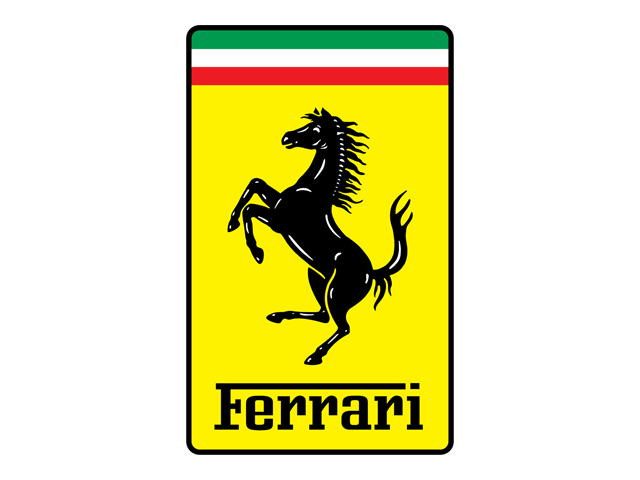1961 Ferrari 250 GT SWB Berlinetta Competizione

The descriptions of the Classic Cars in the Directory were partly generated or supplemented with the help of artificial intelligence (AI). The content may occasionally not always be entirely accurate or factually correct despite careful checking.
The Ferrari 250 GT SWB Berlinetta Competizione 1961 is a true masterpiece of automotive engineering. Developed specifically for racing, this car is the embodiment of speed, agility and power. At the heart of the 250 GT Berlinetta Competizione is a powerful 3.0-liter V12 engine that delivers a staggering 280 horsepower – making it one of the most powerful cars of its time. The powertrain is paired with a 4-speed manual transmission that provides smooth and precise gear shifts, allowing drivers to truly experience the razor-sharp performance of this remarkable car.
One of the most significant technical features of the 250 GT SWB Berlinetta Competizione is its lightweight construction. Using a sophisticated space frame chassis that was made from thin-gauge tubing, this car was able to achieve a significant weight reduction, allowing it to accelerate and corner with unparalleled agility. The exterior was also designed with aerodynamics in mind, such as the Kamm tail, which helps to reduce drag and improve overall performance.
The suspension on the 250 GT SWB Berlinetta Competizione is impressive as well, featuring double-wishbone front suspension with coil springs and a live axle with semi-elliptical leaf springs at the rear. This setup provides excellent handling and stability, allowing the car to take corners with ease and maintain a firm grip on the road. Additionally, the brake system on this car is top-notch, featuring four-wheel disc brakes that provide excellent stopping power.
Inside the cabin, the 250 GT SWB Berlinetta Competizione is beautifully appointed with high-quality materials and a driver-focused layout. The seats are made from luxurious leather, and the dashboard is fitted with clear and easily readable gauges. The car also features a lightweight bodywork that further contributes to its incredibly low weight – coming in at just over 1,080 kilograms.
Overall, the Ferrari 250 GT SWB Berlinetta Competizione 1961 is a true masterpiece of engineering, combining unrivaled power, agility, and precision. Its magnificent V12 engine, lightweight construction, and impressive suspension make it a true racing legend, and one of the most sought-after Ferraris of all time. Whether on the track or cruising down the highway, this car is the perfect example of Italian style and technical excellence.
Milestones
- 1961: Ferrari unveils the 250 GT SWB Berlinetta Competizione, a racing version of the already popular 250 GT Berlinetta. - 1961: The 250 GT SWB Berlinetta Competizione makes its racing debut at the Tour de France Automobile, driven by Belgian driver Lucien Bianchi. - 1961: The 250 GT SWB Berlinetta Competizione wins its first major race, the Tour de France Automobile, driven by Bianchi and co-driver Georges Berger. - 1962: The 250 GT SWB Berlinetta Competizione continues its success by winning the 24 Hours of Le Mans in its class. - 1962: A total of 74 250 GT SWB Berlinetta Competizione cars are produced, with minor variations in specifications and features. - 1963: The 250 GT SWB Berlinetta Competizione wins the Tourist Trophy race at Goodwood, driven by Graham Hill and Joakim Bonnier. - 1964: The 250 GT SWB Berlinetta Competizione wins the GT class at the 12 Hours of Sebring, driven by Mike Parkes and Umberto Maglioli. - 1965: The 250 GT SWB Berlinetta Competizione continues to compete in various races and events, with notable successes including a class victory at the Targa Florio. - 1966: The 250 GT SWB Berlinetta Competizione is retired from racing, as Ferrari moves on to newer models and technology.Technical
• Engine size: 2,953 cc • Maximum power: 280 hp at 7,200 rpm • Maximum torque: 246 Nm at 5,500 rpm • Transmission: 4-speed manual • Top speed: 262 km/h • Acceleration from 0-100 km/h: 6.1 seconds • Weight: 980 kg • Suspension: Independent front suspension, rear live axle with radius arms and Watt linkage • Brakes: Disc brakes all around • Chassis: Tubular steel frame • Body: Aluminum exterior panels • Wheelbase: 2,400 mm • Fuel tank capacity: 120 liters • Tires: 6.50×15 front and rear • Steering: Worm and roller • Cooling system: Liquid-cooled • Exhaust system: Dual exhaust • Dimensions (LxWxH): 4,250 mm x 1,670 mm x 1,220 mm